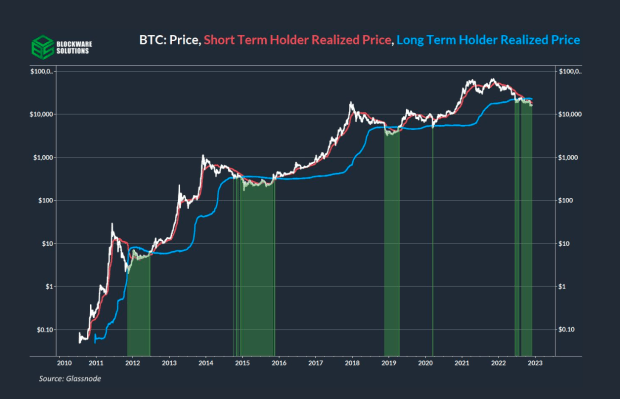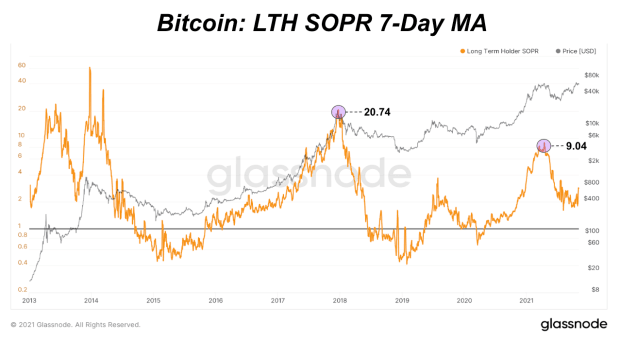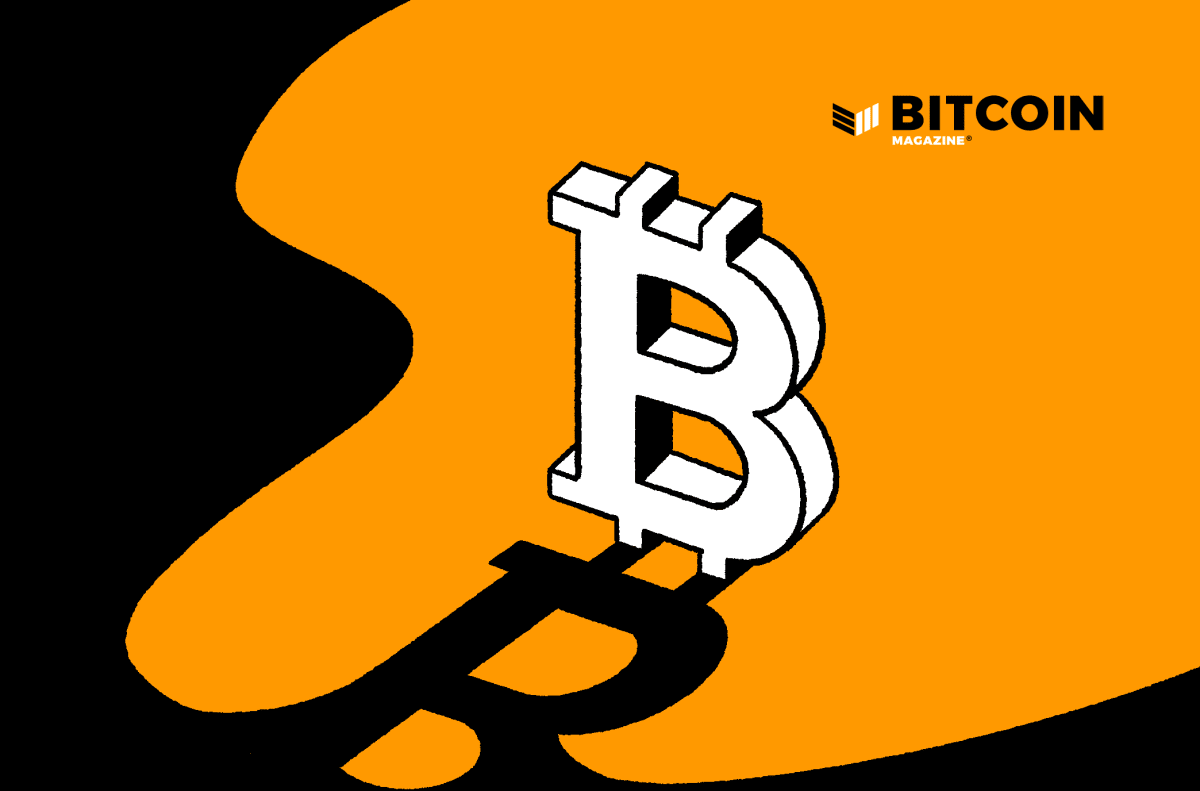Living on Bitcoin in Europe: From Amsterdam to Prague, No Cash Required
Bitcoin Magazine supplied reporter Colin Harper with a fistful of sats and set him loose in Europe. This is the first installment of his “Living on Bitcoin in Europe” series. Continue reading his adventures over the coming days.
Amsterdam and the 40-Hour Day
I landed in Brussels with a rucksack filled with the usual miscellany: a 30-gallon hiking pack of clothes and essentials, 3.5 million sats, a belly full of airline food and a constitution that was shrugging off the sluggish comedown of clonazepam and Ambien.
This is how the first installment of my European “Living on Bitcoin” series began: in the basement train station of the Brussels airport at 8:43 a.m. after a redeye. The modest pharmaceutical cocktail I took during takeoff from Atlanta was supposed to drown out the eight-hour flight with a bout of blissful, transatlantic sleep. Only it didn’t pan out that way and I was awake for the whole trip.
As I waited for the northbound train to Amsterdam, I was also waiting for jet lag to catch up with me. For the remainder of the day though, I would have to power though for 16 hours, somewhere near 20 kilometers of walking, a few liters of beer and a midnight train ride before I could surrender to sleep — all paid for with bitcoin.
My first day living on bitcoin was fun as hell. But damn if it wasn’t exhausting too.

Getting to Amsterdam
The train ride from Brussels to Amsterdam was about two and a half hours long. I avoided sleeping. It would have been ill advised to snooze this early into my trip anyway, but I was also strangely wired from the flight and the prospect of the adventure ahead.
I was also stoked to be in Europe with the express purpose of subsisting only on bitcoin. I had done this in San Francisco back in January 2019, and the result was at once fascinating and underwhelming. None of the shops that used to accept bitcoin (or were advertised as such online) did anymore, save a few. I survived the week largely thanks to bitcoin-to-gift-card services like Bitrefill. This time, I’m hoping to largely avoid these workarounds because the cities on my itinerary (Amsterdam, Arnhem, Berlin and Prague) are all supposed to be the premier bitcoin hotspots in Europe.
With the Netherlands (or, as the Dutch seem to prefer, Holland) as my first stop, I was stopping in Amsterdam for my first day living on bitcoin. Then I would head to Arnhem, a smaller city in the southeast of Holland. Arnhem is supposed to be the Bitcoin city, not just in Holland, but in Europe — hell, in the world. It certainly looked like that online and from all I had heard from fellow Bitcoin Magazine journalist Aaron van Wirdum and others.
Before I got there though, I wanted to pass through Amsterdam for a meet-up hosted by Aaron and his buddies Boris and Jan-Willem for “De Bitcoin Show,” their Dutch language podcast. There were also supposedly a few places I could spend my sats, according to my rudimentary research and what Patrick van der Meijde, the founder of BitKassa and the primary reason so many places in Arnhem accept bitcoin, had told me.
Disembarking at Amsterdam Centraal, I went straight to a bike rental shop that supposedly accepted bitcoin. In San Francisco, transportation was easily attained with Uber credit purchased on Bitrefill. But in Amsterdam, Uber isn’t available. Besides, I would rather spend bitcoin directly with a merchant — plus, a bike would give me the borrowed sense of authenticity that I was, like, totally living as the Dutch do.
Amsterdam is a big city. If I was going to trek it comfortably, lumbering as I was with 40 pounds of gear, a bike was almost required, so I was over the moon to find that Starbikes Rental was advertised on Google as accepting bitcoin.
All the prepping I had done to this point suggested that transportation was going to be the hardest egg to crack on this trip. My work buddy Christian (whom I relied on heavily in San Francisco) had to purchase the train ticket from Brussels to Amsterdam for me, a gesture I repaid in bitcoin. If I could secure a bike (perhaps even a cheap, secondhand one that I could take with me from city to city) then I would at least have my transportation covered within the cities themselves.
Biking on Bitcoin? Not Today, Bud
But San Francisco had also taught me to temper my expectations and never to trust Google as to what places accept bitcoin. Sure enough, upon reaching Starbikes, my hopes for using Amsterdam’s incredible biking infrastructure were dashed.
“Hallo!” a wiry, red-haired, middle-aged women greeted me as I entered the shop, a narrowish but long joint with bikes cluttered in stacks and racks.
“Hello, do you, by chance, still take bitcoin?”
“Bitcoin? Oh, no, not anymore, yeah.”
“Do you remember which payment processor you used?” I asked, recalling that most of the places that accepted bitcoin in 2013-14 in San Francisco had relied on a now-defunct PoS software. This question confused her.
“Um, I’m not too sure. It was the orange one,” she said, but I suspect she was referring to the Bitcoin logo itself. I thanked her and left the shop.
It’s happening again, I thought. None of the places are going to accept bitcoin. And worse, I’ll have to trek through Amsterdam on foot.
I tried a few other bike shops on the off chance that one of the staff had a wallet and I could convince them to take bitcoin for a bike — a Hail Mary that very much fell short, though one guy knew enough about bitcoin to be interested in the experiment.
With no choice but to go on foot, I humped it two kilometers to the Magere Brug cafe (so named for the landmark it overlooks: a drawbridge that literally translates to “little bridge” because the 1691 original was extraordinarily narrow).
As I entered, a young woman dressed all in black and rocking cat eyeliner greeted me outside while talking to the ostensible owner of the place. Her complexion was stark against the midnight black of her turtleneck and she comported herself in a charmingly clumsy sort of way.
First Contact: Buying Lunch With Bitcoin
First things first, I asked her if I really could pay in bitcoin, and yes, she said I could.
Thrilled, I ordered the club sandwich at her recommendation. Two towering double-deckers of bread, cheese, turkey, ham, cucumbers, lettuce and what I assume was hollandaise sauce came out on a plate with tortilla chips.
The impressive sandwich seemed fittingly grand for what I considered a significant improvement over my first living on bitcoin experience: In San Francisco, it took me four days to spend bitcoin in a storefront; in Europe, I had done it within just two hours of arriving at my first destination.
I wolfed down the club and went up to the bar to pay. The PoS was courtesy of BitKassa, the same payment processor that runs the whole of Arnhem’s bitcoin-accepting venues (apparently, Patrick’s influence was spreading). You can pay either through the Lightning Network or on-chain; I opted for on-chain because I was saving my LN sats for the Lightning Conference in Berlin.
The payment, even on-chain, was pretty fast. It probably took 15 seconds from the time I scanned the QR code with my Samourai wallet for it to be “confirmed” by BitKassa (the reason being that the payment goes straight to Patrick’s node so, once it hits his mempool, it accepts the payment on the PoS).
“It Is the Future, so I Have to Learn Sometime”
I asked cat-eyeliner girl if she felt like all of this was silly and what her general impression about the setup was. I had insinuated that it was probably a pain, but she saw the whole thing as an opportunity to interact with an emerging (and important) technology.
“It is the future, so I have to learn sometime,” she responded with a sort of awkward affability.
She told me that she’s actually processed bitcoin sales quite often because the team from General Bytes, an Amsterdam bitcoin company, comes in regularly. This gave me the sense that Dutch (and perhaps European) bitcoiners had a conviction for the orange coin that wasn’t quite the same as it was back home. At the very least, the concept of a circular economy was treated more favorably over here, an impression that was reinforced throughout the trip.
I thanked the waitress and left the cafe. De Bitcoin Show meetup was an unfortunate six kilometers away, across the river, on the north side of Amsterdam. At this point, jet lag was beginning to take hold on me with its soporific grip. My limbs were heavy, my head was clouded and (though I didn’t know it at the time) it would be another 10 hours before I could hit the sack.
I had no choice but to schlep my luggage for the 30-minute walk to the free ferry to cross the channel to the north side of the city. As luck would have it, I managed to take the wrong ferry, extending my trip by another 40 minutes. By the end of the walk, I was trundling along with a limp — passersby probably took me for a drifter.
But no matter, because I’d finally reached Blast Galaxy, the “beercade” that was hosting the meetup. Just in time, as my phone was on its last leg of battery.
The meetup didn’t start until 6:00 p.m. and I was about two hours early, but a bald man was nice enough to let me in to relax before the party began. He runs the joint along with some of his buddies, fixing and flipping arcade games, keeping those he likes to entertain Blast Galaxy’s clientele.
A larger-than-life Sonic the Hedgehog effigy greeted me as I came in. Various video game paraphernalia and iconography littered the walls and floor space. The foyer emptied into a wide-open warehouse area with a bar on the left-hand side, rows of picnic tables in the middle, couches and tables to the right and a treasure trove of arcade games that occupied half of the available space. They had enough games for five mid-sized arcades, from Pac Man to Galaga to shooters like Time Crisis 3.
I took a seat on a couch and charged my phone. The long slog here had left me wasted tired. A dull throb pulsed through my body and my movements felt viscous, like moving through pudding.
Meeting Up at the Meetup
“Who is that guy?” Aaron shouted at me from across the room, rescuing me from a premature sleep. He had just been upstairs recording De Bitcoin Show.
We clasped hands; it was good to see him. Even though we worked halfway across the world and had only met on two other occasions, we have maintained a rapport I find is quite common in Bitcoin’s internationally distributed community.
He took me upstairs to De Bitcoin Show’s studio, which is owned by Boris. Once upon a time, Aaron passed the Lightning torch to Boris, a seasoned video game journalist in Holland who also does bitcoin stuff (along with running his own video game show for Dutch TV).
I told them how my experiment had already been more successful in the first few hours in Holland than in the first few days of San Francisco. When I asked why the Dutch bitcoin scene is so committed (and I hadn’t even seen how committed yet), they chalked it up to a culture that has, according to them, always been rather technically inclined — but in a gritty, down-with-the-state, cypherpunk kind of way not like the buttoned-up, technocratic inclinations of Silicon Valley.
Tech-oriented indeed. The meetup was a wild success. Over 50 bitcoiners from across Holland (and even some from Belgium, I’m told) converged on Blast Galaxy throughout the night. There was a 5 euro cover (bitcoin only) and a bar that accepted fiat or bitcoin, with all bitcoin processed through BitKassa. Aaron covered the first two rounds; I covered the third and had the privilege of paying in Lightning.
I spent the night bouncing around, socializing and competing with an anonymous patron for the high score on Pac Man (they ultimately won). I met a man, one of the principles of General Bytes, who had implanted his private keys into his hand — the most (quite literally) metal gesture of cypherpunk self-reliance I’ve ever seen. (He’s taken “Not your keys, not your coins!” to a new, subcutaneous level).
At the peak hours, the room was a steaming pit of booze, bitcoin and masculinity (almost everyone there was male), humid with sweltering body mass and intellectual stimulation. An industrial fan at the front entrance wrestled with the musk and heat.
I had somehow broken through the torpor of being up nearly 40 hours at this point, but I knew the second wind wouldn’t last long. Around 10:00 p.m., I grabbed Patrick from BitKassa, who had kindly agreed to buy me a train pass to Arnhem. After another two and a half hours of walking, train riding and taxi cabbing (paid forward by Patrick, to be remunerated in satoshis later), I found myself at the footsteps of the BnB Molenbeke and wished Patrick a good night.
Reaching my room after a brief tour of the house and a rundown of its rules, I collapsed on my bed and, exhausted in the purest sense of the word, I fell immediately into an unshakeable sleep.
The post Living on Bitcoin in Europe: From Amsterdam to Prague, No Cash Required appeared first on Bitcoin Magazine.









